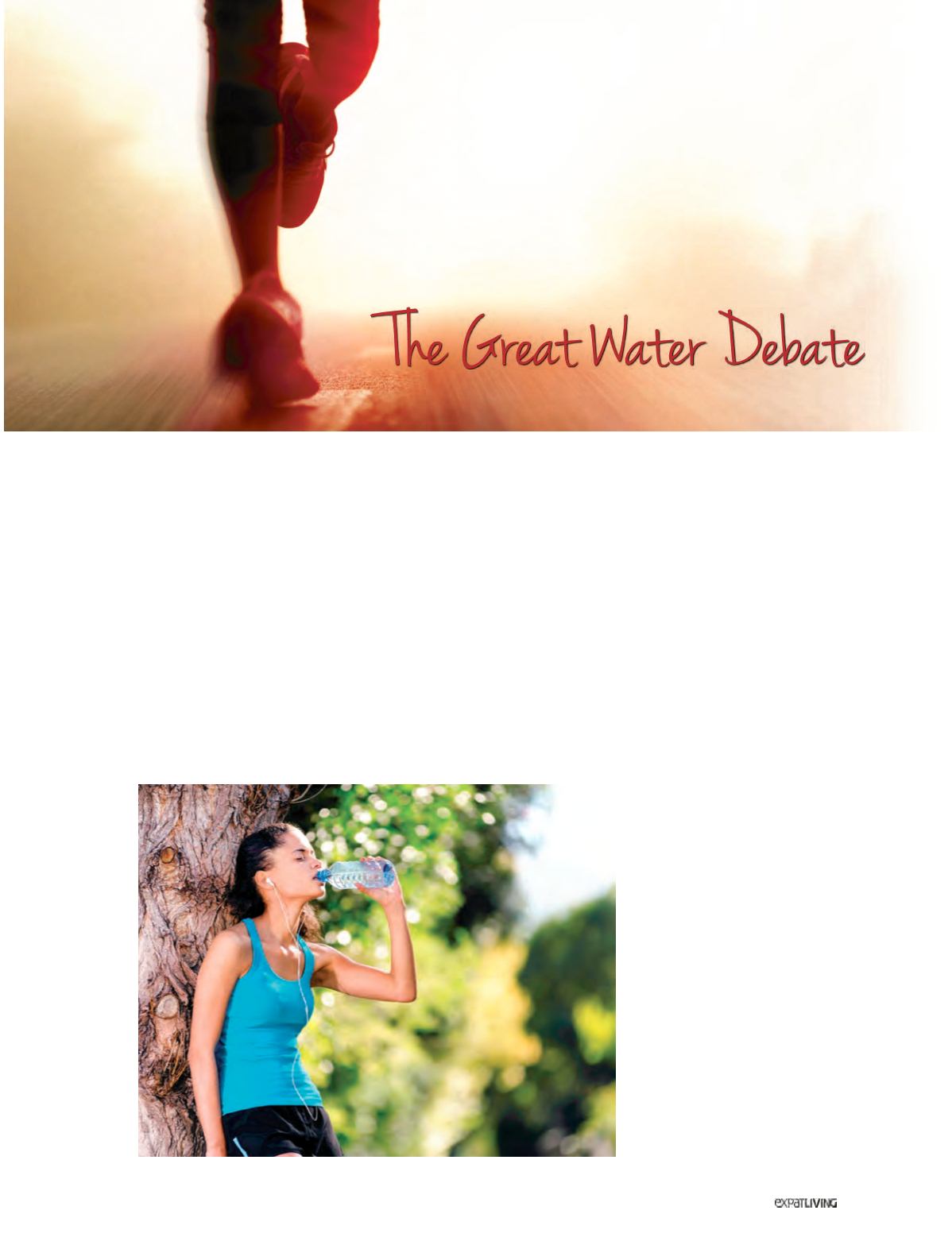

305
COMMENTARY:
RUNNING
June14
RUNNING
M
y favourite East Coast
drinking fountain – the one
near Changi Sailing Club –
wasn’t working this Sunday
morning. Blazing from a blue sky, the
sun delivered its usual 33°C (real feel
44°, said accuweather.com). Luckily,
having to run three or four kilometres to
the next water point isn’t a problem. We
can thank evolution for bodies that are
perfectly designed to run in the heat –
and on much smaller amounts of water
than previously thought.
In our regular running column, we share favourite routes and talk about
shoes, gadgets, treadmills, nutrition, racing, hashing, children’s running
and more. This month, VERNE MAREE taps into the water debate.
The dehydration myth
Yes, runners need water, and yes, we
should drink enough of it. But drinking too
much
water can bemore dangerous than
not drinking enough, as explained below.
Why I think it’s still worth addressing
the point here is that popular wisdom
often lags way behind scientific
research. In fact, the health and fitness
industry is still urging eight or more large
glasses of water a day.
“If you wait till you’re thirsty to drink,”
they say, “it’s too late – you’re already
dehydrated.” They’re dead wrong, as it
turns out. Your body knows best, and
thirst is the mechanism it uses to tell
you when to drink; and that’s as true
for an ordinary day at the office as it
is when you’re out there pounding the
pavements.
Quoted in runnersworld.com, “The
eight glasses a day is totally arbitrary,”
says Susan Yeargin, PhD, assistant
professor of athletic training at the
University of South Carolina. “Everybody,
especially athletes, has different needs.”
Evolution
We’re born to run, declares TimNoakes,
the acclaimed South African sports
scientist. He argues that our species,
Homo sapiens
, having evolved on
the arid African savannah, is perfectly
designed to run long distances in the
heat.
Four main adaptations gave us the
evolutionary edge:
bipedalism
(walking
on two feet rather than on the hands
and feet) reduced our exposure to sun
and heat, and made us more effective
runners; our prodigious
sweating
capacity kept us cool during exercise;
so does being
furless
; and our
brain
protects us from heat injury by making
sure that we only ever exercise at an
intensity or for a duration that won’t
allow our body temperature to rise to a
dangerous level.
Until the 1950s or so, elite runners
drank according to thirst. In fact, not
drinking
at all
during a marathon was
regarded as an ultimate aim! Jim Peters,
perhaps the greatest marathoner of all



















